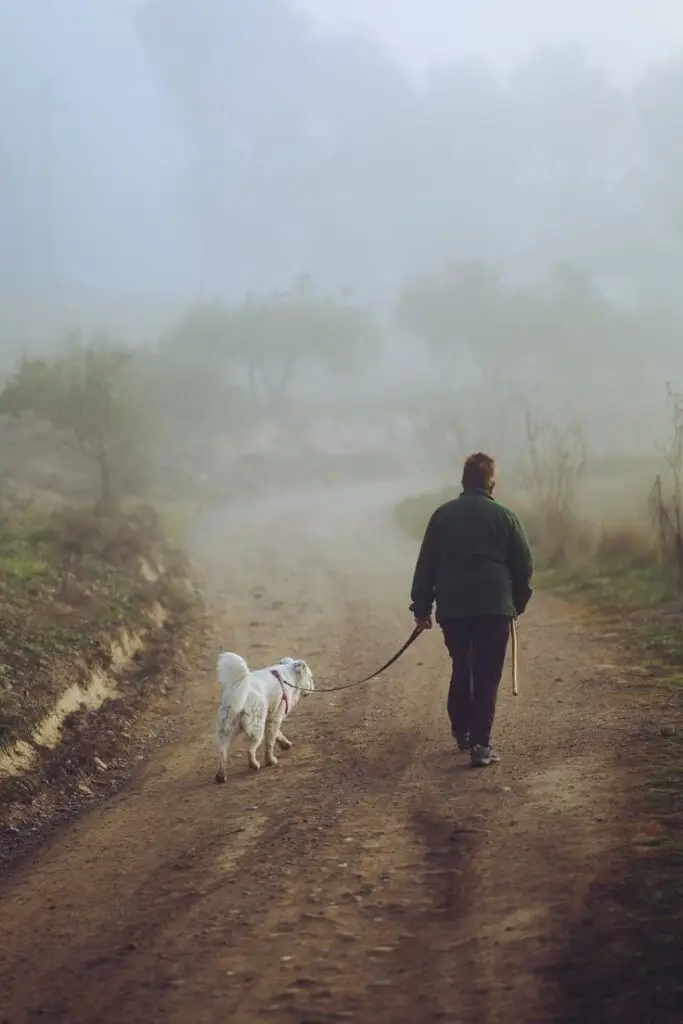Contents
- 1 How to Train Your Dog to Heel: A Complete Step-by-Step Guide
How to Train Your Dog to Heel: A Complete Step-by-Step Guide
Introduction
Learning how to train dog to heel is one of the most valuable skills you can teach your canine companion. The heel command transforms chaotic walks into pleasant, controlled experiences where your dog walks calmly beside you without pulling on the leash. Proper dog heel training requires patience, consistency, and the right techniques to establish clear communication between you and your pet. This fundamental obedience skill not only makes daily walks more enjoyable but also strengthens the bond between you and your dog while ensuring safety in various situations. Whether you’re dealing with a energetic puppy or an older dog with established habits, mastering heel training will significantly improve your dog’s behavior and your overall relationship. The investment in time and effort pays dividends through years of peaceful, controlled walks and enhanced obedience.
What Does “Heel” Mean in Dog Training?
The heel command inspires your dog to walk closely alongside your left leg, with their placement firm despite changes in speed or direction. In contrast to loose leash walking, where there can be some looseness, heeling involves precise positionning with the shoulder of your dog aligned with your leg. This forms a formal walking relationship where your dog never falls behind nor gets ahead.
Trainers typically separate the informal loose leash walking and formal heeling. In competitive obedience, the heel position is defined with precision. For the owner, however, a yielding heel that draws the dog close and engaged has practical applications. The most important element is consistency of command and expectation.
Benefits of Train Your Dog to Heel
Safety Advantages
Heeling is essential for safety in urban environments. A well-heeled dog will not get into the street, jump on strangers, or get distracted by other canines. This controlled placement enables you to instantly divert your dog from danger.
Greater Control
Well-heel-trained dogs offer improved responsiveness to further commands and heightened attention towards the handler. Improved focus culminates in improved overall obedience and enables further command training.
Improved Bond
Intimacy and constant interaction required for heel training strengthen the bond between owner and dog. Your pet gains insight into your body language and pace, developing a comfortable walking relationship.
Essential Equipment for Train Your Dog to Heel
| Equipment Type | Recommended Options | Purpose |
| Collar | Flat buckle collar, Martingale collar | Basic control and ID attachment |
| Leash | 6-foot leather or nylon leash | Standard length for heel training |
| Training Aids | Front-clip harness, Head collar | Additional control for strong pullers |
| Treats | High-value small treats | Positive reinforcement rewards |
| Clicker | Standard training clicker | Precise timing for behavior marking |
| Treat Pouch | Belt-mounted treat bag | Easy access during training sessions |
Equipment Selection
The collar needs to fit tightly but have two fingers of space below when secured. Don’t use retractable leashes to train for the heel since they promote pulling. Employ very rewarding, small treats that can be gobbled up in an instant without impeding the training session.
Step-by-Step Heel Training Method
Foundation Phase (Week 1-2)
Start in a distraction-free, indoor area. Put treats on your left side to get your dog to take position next to your left leg. Constantly say “heel” and reward whenever your dog assumes the correct position.
First, practice short distances, just a few steps before rewarding. Focus on making your dog comfortable in the position instead of concerns about duration. Train in short but repeated sessions—five to ten minutes several times a day is better than long training.
Building Duration (Week 3-4)
As your dog reliably moves into the heel position upon command, start increasing the distance before providing rewards. Begin with ten steps, gradually advancing to twenty, thirty, and more. Ensure a steady pace and straight lines throughout this stage.
Use gentle directional changes while maintaining the heel position. Start with wide turns before moving on to sharp turns. Your dog should adjust their positioning to remain parallel to your leg with these changes.
Adding Distractions (Week 5-6)
Transition training sessions outdoors to low-distraction areas like quiet neighborhood streets. The extra stimuli will challenge your dog’s focus and commitment to the heel position. Stand ready to resort to shorter ranges and more frequent treats at first.
Phase in more advanced distractions like other dogs, people, and stimulating odors slowly. Take the time to reinforce the heel command and reward your dog with good attention in the presence of distractions.
Advanced Heel Training (Week 7+)
Combine variations in speed with your heel training. Alternate between slow walking, regular pacing, and quick bursts of speed without taking your dog out of heel position. Your dog will instinctively harmonize with your speed without further cues.
Put stops and starts in your walk schedule. Your dog will make a sudden halt when you make a stop and take the heel position the instant you resume walking. This builds a responsive companion who is constantly interested in your movement.
Common Mistakes to Avoid
Changing Commands
Switching words for identical behavior will confuse dogs. Use “heel” consistently throughout training and have everyone in the household on the same page with commands and procedures.
Not Enough Rewards
High-value reward given at the right moment will be the foundation of a successful heel training. The use of old treats or rewarding with wait times can strongly hinder improvement. Discover what really motivates your dog and use those rewards on a regular basis.
Rushing the Training
Moving too quickly through training stages usually leads to regression. Dogs must practice each skill several times before advancing. Practicing patience early on prevents frustration in the long run.
Unfocused Training
Random training sessions produce average results. Everyday practice for limited periods, even, creates sustained improvement and avoids letting skills retrogress.
Troubleshooting Common Problems
Pulling Ahead
Dogs that have a tendency to pull ahead need to be corrected immediately in addition to rewarding correct positioning. Stop walking when your dog pulls and only proceed after your dog returns to heel position. This teaches them that pulling will stop movement forward.
Falling Behind
Nervous or slow-moving dogs can fall out of heel position. Reward them with soothing voices and loving treatment to encourage them to maintain the proper position. Decide whether pace adjustments are necessary based on your dog’s comfort level.
Distruction Problem
Dogs distracted by environment or stimuli must be trained to develop their concentration level. Train concentration commands like “watch me” prior to training heels. Gradually increase the level of distractions as their concentration level builds up.
FAQ Section
How long does it take to train a dog to heel?
Most dogs show basic heel understanding within 2-3 weeks of consistent daily training. However, achieving reliable heel performance in distracting environments typically requires 2-3 months of regular practice. Individual dogs vary based on age, breed, and previous training experience.
How can I teach my dog to Heel?
Teach it initially by luring him to stand at your side, hold a treat in your hand on the side you want him to heel at, click and give him the treat when he’s standing in the right place. Release him, move somewhere else, then lure him back to your side. Repeat until he gets the idea.
Should I use a special collar for heel training?
Standard flat collars work well for most dogs during heel training. Dogs that pull excessively may benefit from front-clip harnesses or head collars, but these should be temporary training aids rather than permanent solutions. The goal is teaching voluntary cooperation.
What age can a dog learn to Heel?
For me, heeling starts the moment your pup gets home. It’s a zero-pressure, rewarding activity that creates a positive training foundation for your pup. Misi Knutson, breeder and trainer at Merrymeeting Kennels, explains her early leash work development program, “Heel is one of the first commands I use at eight weeks.
Is heel training different for large versus small dogs?
The basic principles remain identical, but physical considerations vary. Large dogs require stronger initial control and pose greater safety risks if training fails. Small dogs may need adjusted pace expectations and different treat delivery methods due to height differences.
Conclusion
Mastering heel training can completely transform daily walks from chaotic and stressful ordeals into calm, enjoyable adventures for both you and your dog. The rewarding investment in proper training techniques, consistent practice, and patient progression leads to lasting behavioral improvements that deeply strengthen the bond between you and your canine companion.Remember, every dog learns at their own pace—and by embracing positive, reward-based methods, you’ll create an environment of trust, confidence, and joy throughout the training journey. With dedication, consistency, and a can-do attitude, you’ll soon experience the true joy and pride of walking a well-trained dog who eagerly chooses to stay by your side.The invaluable skills developed through heel training go far beyond walking—they lay the foundation for lifelong obedience, mutual respect, and harmonious communication in every aspect of your dog’s behavior.
External Resources
For additional information and professional guidance on dog heel training, consider these valuable resources:
- American Kennel Club Training Resources: AKC.org/expert-advice/training – Comprehensive training guides and professional tips
- Association of Professional Dog Trainers: APDT.com – Directory of certified trainers and educational materials
- Karen Pryor Clicker Training: ClickerTraining.com – Science-based positive reinforcement methods
- Whole Dog Journal: Whole-dog-journal.com – In-depth articles on dog training and behavior




